In the art community, gouache painting has become more and more popular these past several years.
Despite this rising trend, many artists and art enthusiasts still confuse gouache and watercolour because both mediums share similar qualities.
Which leads to this common question: What is gouache paint?
That’s why, in this article, I’ve written a complete beginner’s guide to gouache painting in order to:
- Explain what gouache is, which artists use it, and how artists use gouache to create stunning artwork
- Highlight the similarities and differences between gouache vs watercolour
- Recommend the best art supplies and gouache brands that are good-quality and budget-friendly
By the time you’re done reading you’ll have a solid understanding of what gouache art is and how you can get started with it!
DISCLOSURE: This page contains affiliate links. If you make a qualified purchase using any of the links, I’ll earn a small commission at no extra cost to you. I appreciate every sale because it allows me to create free content to promote the growth of this website.
Table of Contents
What is Gouache Paint?
First of all, it’s important to understand the definition of gouache.
Simply put, gouache is a type of paint that belongs to the watermedia family. That means gouache paint is activated when water is added to the pigments.
In terms of composition, gouache is similar to watercolours. Gouache paint is made using a combination of a water-soluble binder, gum arabic, pigment, and sometimes chalk which functions as a filler.
If you’re confused about how to pronounce gouache, know that it’s a French word. In English, we pronounce it as gwash.
What is Gouache Paint Used For?
Gouache is a popular medium of choice among illustrators, designers, and story boarders because they praise gouache paint’s opaque viscosity and matte finish.
In this way, gouache paint is good for illustrations, posters, advertisements, children’s books, and comics that use bold pigments and solid blocks of colour in their visual presentation.
Take a look at the painting below to observe the opaque appearance of gouache in a finished illustration.
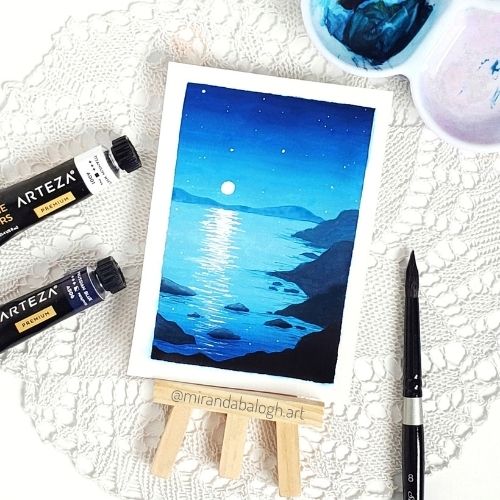
Gouache Paint vs Watercolour Paint
Often enough, gouache is mistaken for watercolours because both mediums share a lot of similarities. As a result, many artists simply refer to gouache as opaque watercolours.
However, I believe gouache art deserves recognition for its unique qualities that make is quite distinguishable from watercolours.
So, let’s take a moment to highlight the noticeable differences between these painting styles:
- Gouache is opaque whereas watercolours have a thin consistency
- Gouache paint dries opaquely whereas watercolours dry transparently
- Gouache dries with an even matte finish whereas watercolour dries lightly with a translucent finish
- Gouache particles are coarser and heavier whereas watercolour particles are lighter
- Gouache pigments can only be lightened by using white gouache, whereas watercolour pigments are lightened by water
- Gouache paint dries quickly whereas watercolours take longer to dry
- Gouache can be used with or without water whereas watercolours must be activated with water
- Gouache can be painted light to dark or dark to light whereas watercolours work the best when painted from light to dark
- Gouache paint is so opaque that it can easily be layered over to cover up mistakes, but watercolour is transparent which makes mistakes harder to cover up
As you can see, gouache and watercolour are actually a lot more different than they appear on surface level.
So it’s fair to conclude that both mediums have their own unique characteristics and utilities.
Note: Click here for a more detailed and in-depth breakdown of the differences between watercolour vs gouache.
Gouache Paint and Brushes Guide
What Gouache Paint to Buy
There are many brands of gouache paint on the market that you can buy and experiment with.
In my opinion, Arteza Gouache Paint for beginners is a great investment because you can purchase a large amount of paint tubes for a reasonable cost without hurting your wallet.
What’s more, the pigments and rich and viscous, meaning they’re thick. The colours lay down smoothly and the pigments blend nicely.
You can use them straight from the tube, or you can water them down to thin out the consistency without losing the vibrancy of the pigments. For this reason, they have a lot of versatility.
Arteza Gouche – Set of 60
• Very affordable set of 60 diverse pigments that come in 12ml tubes
• Rich, viscous application for matte paintings or thin, luminous application for watercolours
• Gouache lays down smoothly, flatly, and evenly
BUY ON AMAZONIf you’re looking for an artist grade set with superior quality pigment, then I suggest you invest in the Winsor & Newton Designers’ Gouache Set.
Why? Because the paints are very opaque which provides full coverage. What’s more, the paint dries quickly and the pigments retain their vibrancy and boldness.
The application of these paints is smooth and flat, so it is very easy to blend the colours. As well, the paints are easy to re-wet and water down into a thinner consistency.
The verdict?
If you want a set of high-quality paints that produce professional results, definitely invest in this excellent set of designer gouache.
Recommended Gouache Brushes
Luckily, gouache paint is so versatile that a large array of brushes can be used with the paint and you won’t have to worry about your brushes being damaged.
Personally, I use either synthetic watercolour brushes or a mix of synthetic and animal hair brushes, depending on what I’m painting.
For a good-quality but affordable option, you can use the synthetic Black Tulip watercolour brushes by ZenArts because the bristles hold the gouache pigments and lay them down nicely on paper.
Moreover, you can paint with gouache without watering down the pigment, so it’s not necessary to own a thirsty watercolour brush.
Black Tulip Watercolour Brushes
• Comes with 6 assorted brushes that are suited for beginners
• Made from synthetic squirrel fibers that mimic the real animal hair
• Flexible brushes with lots of versatility
BUY ON AMAZONOn the other hand, you might want to use brushes with a finer, softer, and more versatile brush tip such as the Silver Black Velvet brushes.
These brushes are high-quality and offer a lot of brushstroke variation. That means you can paint an array of thick or thin strokes with one brush.
These brushes hold lots of water. So if you choose to paint with natural hair bristles, make sure you understand how to control water so that you know how much water to use with your brush.
But if you’re not yet confident in your ability to control the water, invest in a set of good-quality synthetic brushes instead.
Silver Black Velvet Watercolour Brushes
• Comes with a size 6 round brush, size 12 round brush, and 1 inch flat brush
• Made from a superior blend of squirrel hair and synthetic fibers
• Fine points, soft bristles, and fibers hold a lot of water
BUY ON AMAZONRecommended Gouache Paper
Due to it’s versatile nature, gouache paint can be used on greater variety of papers when compared to watercolour, which is limited to thick paper that can handle heavy washes.
Personally, I paint with gouache on both watercolour paper and on mixed media paper, depending on how many layers I’m painting.
To break it down for you, I would paint with gouache on mixed media paper as such:
- Mixed media paper is heavy enough to handle a couple of washes of paint, but it will warp if you paint with too much water
- Mixed media paper is great for gouache studies and loose sketches
- Mixed media paper is great for practicing techniques, experimenting with colours, and painting thumbnails
- Mixed media paper is not the best paper if you’re planning to create finished pieces because the paper might warp or buckle under several heavy layers
- If you’re not using water and are only painting opaque matter layers, then mixed media paper is totally fine
- My recommended mixed media paper is the Canson XL Mixed Media paper which is what I use for all my sketchbooks
Canson Watercolor Paper
• 140 lbs / 300 gsm paper that’s thick enough to handle water and layering
• Acid-free paper, so the paper shouldn’t turn yellow
• Paper works well for watercolours and mixed media art
BUY ON AMAZONOn the other hand, I would use 100% cotton paper as such:
- Watercolour paper is best suited for finished pieces that require lots of layering and many washes
- Watercolour paper that is made of 100% cotton paper will absorb the paint much better, thus the pigment application will be superior
- Watercolour paper is perfect for finished illustrations, artwork that you’re planning to sell, and artwork that you’re giving away as gifts
- Watercolour paper is better to paint on if you’re creating an artwork that is a combination of gouache and watercolour
- My recommended watercolour paper is Arches 100% cotton paper
Arches Cold-Pressed Watercolor Paper
• 100% cotton paper is super water absorbent and ideal for watercolours
• 300 gsm (140 lbs) is thick paper, so it can handle many layers of pigment
• Acid free: Your paper won’t turn yellow
BUY ON AMAZONSince gouache and watercolour use similar supplies, feel free to peruse this list of painting supplies for watercolour and gouache.
On the list, you’ll find a few additional items that are essential for painting with gouache.
How to Paint with Gouache
Here are a few tips and tricks to help you get started painting with gouache. By following this advice, you’ll be able to paint smoothly and enjoyably without running into frustrating painting situations.

Painting with Gouache: With and Without Water
Without wetting the pigment, dip your brush directly into the paint. Load up your brush and paint a few simple streaks on your paper to create thick and matte strokes of colour.
Pro tip: If you have a bit of pigment on your brush, you can drag the bristles across the paper to create a dry brush texture that looks similar to rocky mountains or reflected light on a body of water.
Next, water down the gouache pigment and then drag your paintbrush across the paper to create layers that have a thinner and lighter appearance.
By experimenting with various ratios of water and paint, you can create a variety of thick and thin or opaque and translucent strokes.
Note: For more information on various painting techniques, check out this article about watercolour and gouache techniques.
Lighten Pigments with White Gouache
In order to lighten gouache, you must combine the paint with white gouache. Doing so will lighten the pigment and give you the ability to create beautiful gradients.
Alternatively, if you don’t have a lot of white gouache available, you can use a lighter pigment and blend the 2 colours together to create a smooth gradient.
For example, you can blend a sky blue pigment with a medium blue pigment to create an in-between hue without relying on white gouache.
But you must have a larger set of gouache paints to work with in order to accomplish this method of mixing.
Also, since gouache is similar to watercolour, have a look at this article about helpful watercolour tips to learn more tricks of the trade.
Painting Multiple Layers
Layering (also known as glazing) is very easy to achieve with gouache paint.
All you have to do is lay down your first layer of paint and then wait for it to dry.
Once the first layer has dried, you can paint directly over the first layer. Due to the opaque nature of gouache, you are able to completely cover entire sections of the first layer.
In this way, gouache is good for beginners because it is a very forgivable medium that offers ample opportunity to fix mistakes or change details.
For more information about all the diverse techniques you can use with gouache, check out this article by the art company Arteza.
Conclusion
There you have it: a guide to understand what is gouache paint.
Although similar to watercolours, it’s clear that gouache is a cousin to watercolour and not a twin as some people mistakenly believe.
Now that you know all about the unique properties of gouache and how it can be used to create beautiful workout, it’s up to you to decide if you’ll start painting with this medium.
And if you’re already an avid fan of gouache, I hope this guide has given you greater clarity on how to use gouache in your own artwork.
If this article has piqued your curiosity about the watermedia family, the next step is to take a look at my companion article on How to Paint With Watercolours: Skyrocket Your Skill Level.
Do you paint with gouache? If not, has this article inspired you to try gouache painting? Share your opinion in the comments below!

Miranda Balogh
Artist & Online Educator






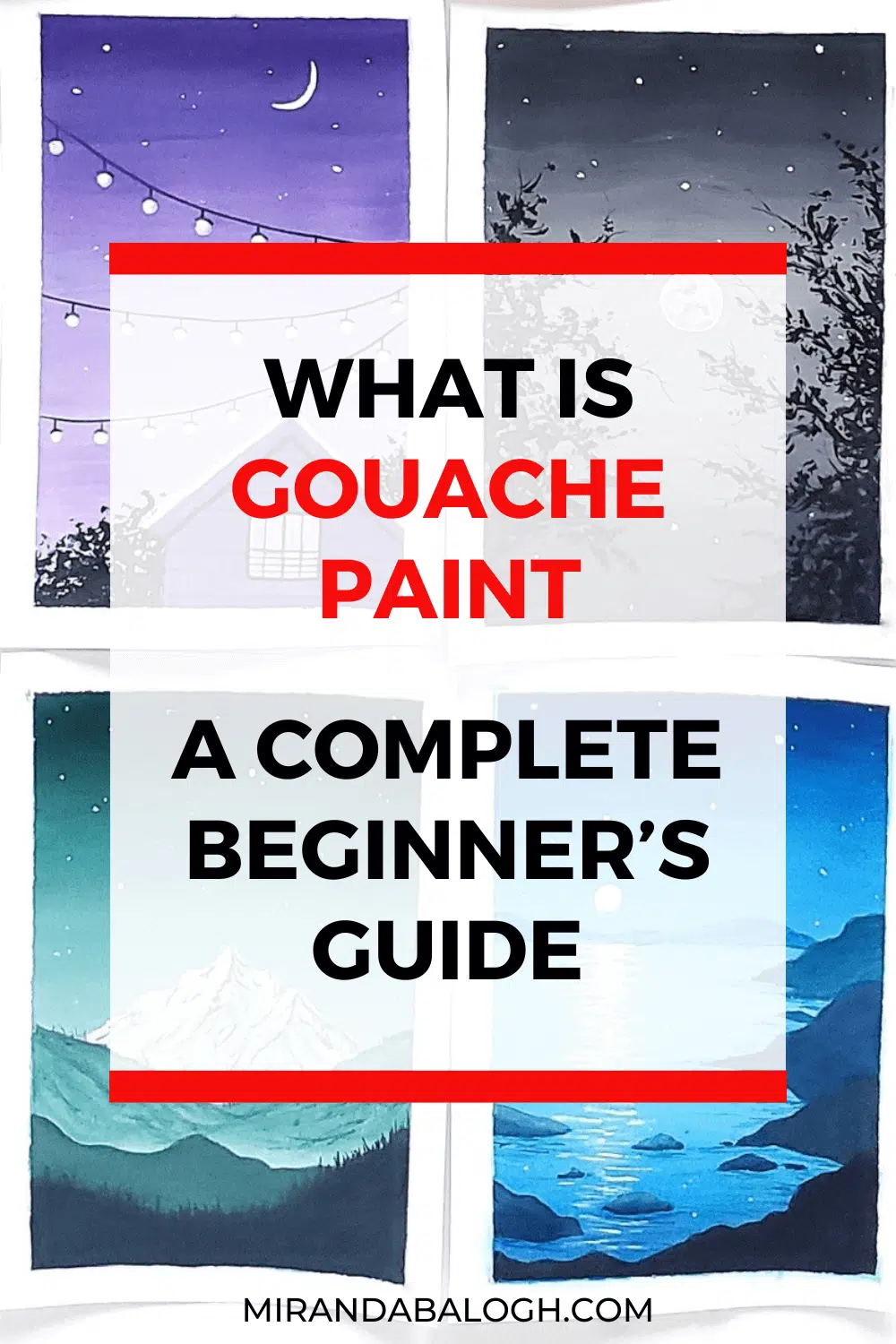
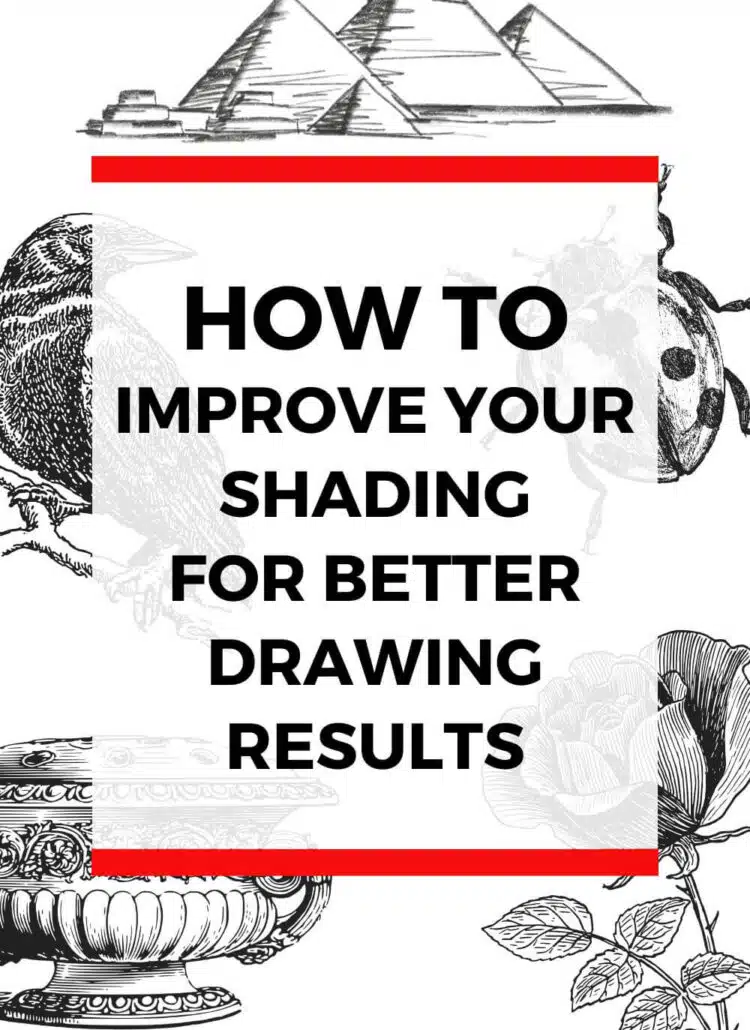
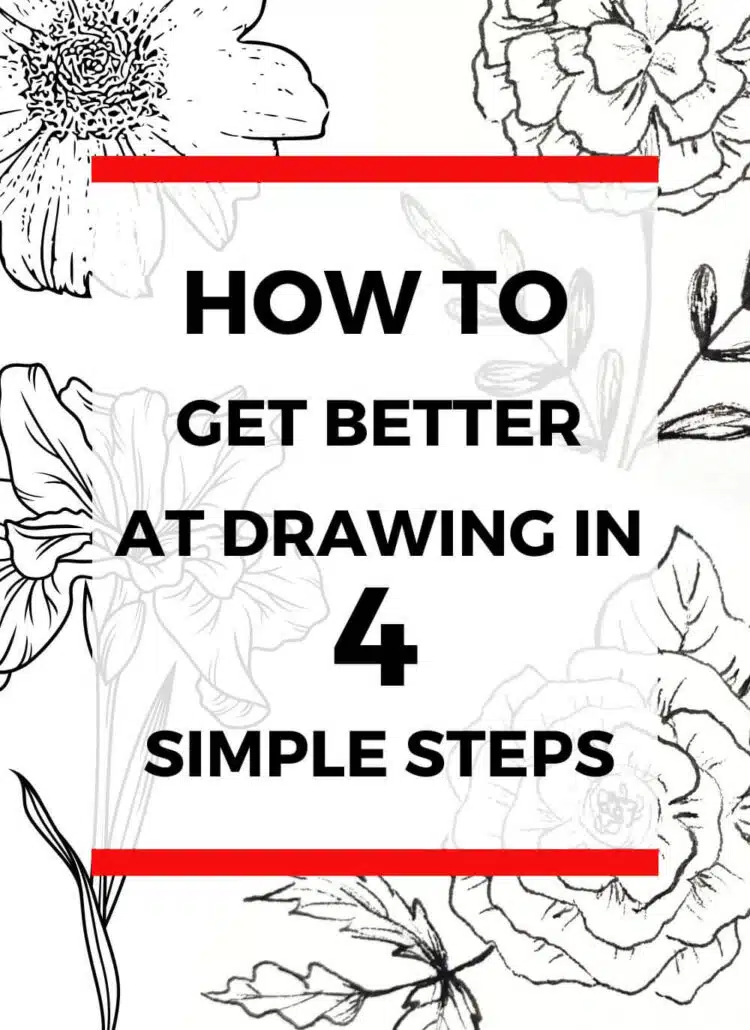
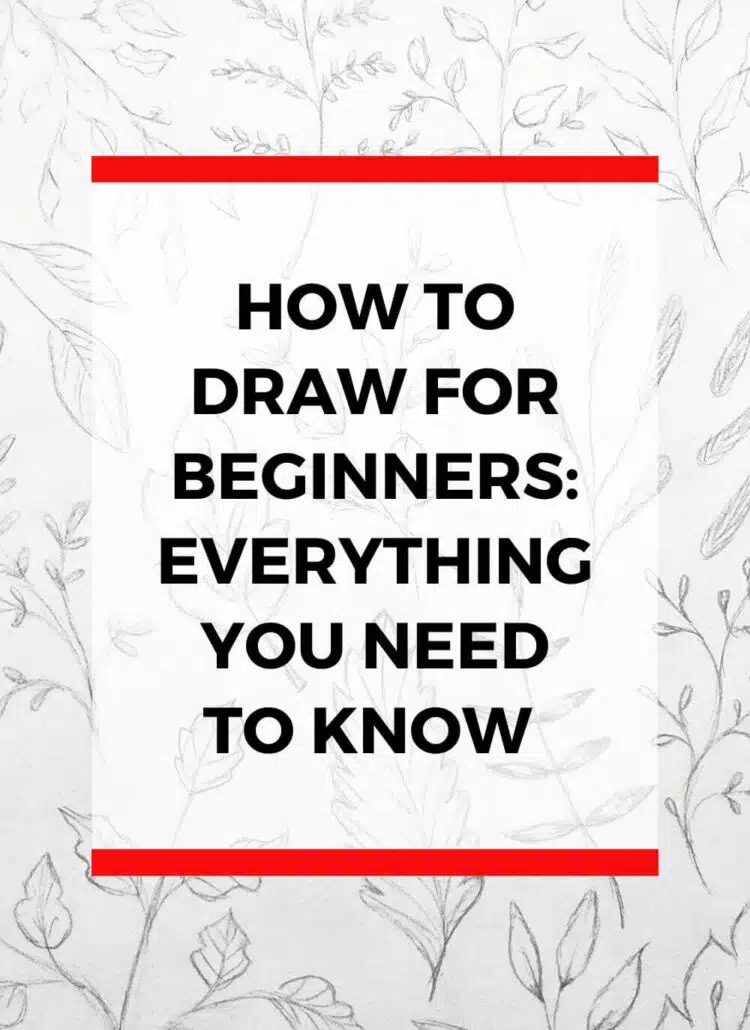
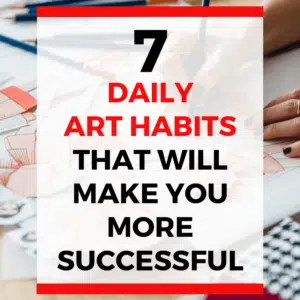
This was super helpful!! I’m a closet artist who dreams of buying a paint set and expressing some hidden feelings, but I just didn’t know where to start lol. You broke everything down and made it super easy to know where to start with some really helpful, practical tips. Thank you =)!
You’re welcome! Why not turn that dream into reality by purchasing your first set of art supplies? I’m sure you would be a great artist!
This post couldn’t have come at a better time! My partner just bought me a gouache paint set and I’ve been putting off learning how to paint with it, because I’m used to watercolour! But now I feel confident and inspired to paint my first gouache artwork. Thank you!
What perfect timing! I hope you have a lot of fun painting with gouache.
Last year when my mom retired, she began to cultivate her skills as an artist – something she has never had the time for. It’s been incredible to watch her grow and honestly, I’m forever in awe of her talent! She’s getting commissioned pieces and is even interested in opening an Etsy store. I know she’s used gouache paint in the past and I’ve even bought it for her for Christmas, but I had no clue what it really was! This was super helpful so I could understand and relate to what she loves a little more!
What a lovely story! I’m glad that your mother in enjoying her artistic activities; it sounds like she’s having a lot of fun! Thanks for sharing.
This is so interesting, I was not aware of gouche paint – I can’t wait to try working with it.
I’m happy that you’ve discovered gouache paint. Try painting with it; I think you’ll enjoy it!
Thank you for this comprehensive explanation. My go-to, in the classroom, has always been watercolors, but it would be really fun to introduce gouache paint to my students as well. Looking forward to it!
If your students already love watercolours, then I’m certain they would enjoy gouache, too. Thanks for sharing!
So informative! You do such a nice job showing the differences and when to use each type of water based paints. Would you suggest using watercolor or gouache paints with young children?
I think young children would do well with watercolour or gouache paint. However, if I had to choose one, I would choose gouache because it is more forgiving, so children will find it easier to use without getting discouraged. I hope you find this advice helpful!
Great article!
Does watercolor and gouache paper have a gsm value associated with them as journals do?
I am feeling super inspired to start maybe incorporating either watercolor or gouache into my bullet journal themes.
Yes, they do! Watercolour is best suited for heavier paper that is at least 300gsm so it can absorb the water. Gouache, on the other hand, works well at 300gsm and it can handle lighter 160gsm paper since it can be applied wet or dry. I’m not familiar with the gsm values for bullet journals, but I’m sure you can find one that handles watercolour and gouache paint!
I did some research. They make a few 160 gsm bullet journal notebooks. I saw as high as 200 but not 300.
Based on that, is your recommendation to go gouache if I want to add paint to my journals, or can I use either one?
Yes! If your bullet journal is around 160 gsm or up to 200 gsm, then I would choose gouache over watercolour because it will apply nicely when dry. And the paper will be able to handle light washes of paint. But if your bullet journal is less than 160 gsm, you might want to only apply the gouache when it’s dry. I often use gouache in a mixed media sketchbook that is 160 gsm, and it holds up quite well with only minimal buckling when I add water. So it sounds like gouache paint would work well for your bullet journal!
I love this! Such great painting tips!
Thank you! I’m glad you enjoyed this article.
Wow! Awesome details! Thanks for sharing! I’ll have to try this out!
Thanks! I’m glad that you enjoyed reading this article.
Thanks indeed that was very interesting; I have been painting with gouache for many years on and off and am really glad that somebody is spreading its use to a wider audience. Personally I really like travel posters from the 1930’s and that has influenced my “style” of painting with large blocks of colour that infer detail. I also use gouache in an airbrush, which yields excellent results. Now and again I try watercolours or oil paintings which have their own characteristics, but I always return to gouache. The dreaded covid epidemic gave me the opportunity to retire and sit and paint most every day for months, with our trusty dog by my side snoring gently. For those just starting with gouache: start with something simple, an apple or a crude landscape, get a feel for using the medium and what it can do. It could be the beginning of a long pleasurable hobby; I am far from Leonardo de Vinci, but it gives me immeasurable pleasure to turn a blank piece of 300gsm paper into lots of fun (and anguish) and possibly something that others may appreciate as well.
Thank you for sharing your story! You’re right, gouache painting is such a pleasurable hobby. As the years go by, I hope gouache gains in popularity.
Hi! Thank you for your wonderful tips. I am going to start using gouash this week and it certainly helped to read your comments.
I live in Mexico and I was also an ESL teacher.
Congrats! Have fun painting with gouache, and I hope my tips help you paint with confidence!